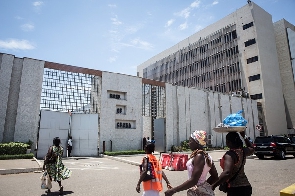A stress test carried by the Bank of Ghana on Ghanaian banks and specialised deposit-taking institutions revealed that COVID-19 containment measures such as the lockdowns, border closures, and social distancing disrupted supply chains and dampened economic activities.
These measures, it said, pose two main risks to the Ghanaian financial industry – liquidity risk (increasing withdrawals against low deposits) and credit risk (high rate of default).
The resilience of the banking sector to these shocks was evaluated using a stress-testing framework.
An initial assessment by the central bank was conducted using January 2020 financials and subsequently updated with March 2020 figures to assess the level of resilience of the system to stress over time.
There are emerging signs that the impact of the COVID-19 pandemic is beginning to weigh on the banking industry’s performance adversely though the performance improved at the end of March 2020.
According to Banking Sector Development Report by the Bank of Ghana, the lower-than-expected growth rates in the key performance indicators during Q12020 reflect the challenging operating environment for the banking sector due to COVID-19.
Notwithstanding this, the financial sector soundness indicators remained healthy.
“Broadly, the findings revealed that the banking sector is sound and resilient to liquidity and credit risk shocks emanating from the pandemic”, it said.
Supported by strong capital buffers and a high liquidity position, the banking sector is well-positioned to withstand mild to moderate liquidity and credit shocks.
However, the BoG said the robustness of the Specialised Deposit-Taking Institutions (SDIs) sector to the adverse impacts from COVID-19 has somewhat reduced overtime.
The banking industry recorded a profit of GHS960.40 million in Q12020, representing a growth of 16.3%.
Less than half of the 37.3% growth recorded in Q12019 was due mainly to a sharp increase in operational expenses.
Business News of Wednesday, 17 June 2020
Source: classfmonline.com













